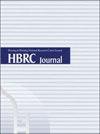Building for a sustainable future: investigating the thermal performance of innovative and local wall materials in an Egyptian housing unit
Q2 Engineering
引用次数: 0
Abstract
Nowadays, the majority of nations are facing the challenge of global warming which has caused less thermal comfort in indoor environments with further energy consumption. To mitigate these negative impacts, selecting appropriate building materials with environmental design principles is crucial to meet user’s needs. This study aims to investigate the impact of implementing innovative and locally sourced building materials in the wall construction of a residential building in Egypt; to improve energy consumption and users’ thermal comfort. The thermal performance of six alternative walls was analyzed and compared using computer simulation software. Alternative wall systems included innovative materials, such as Marmox boards and aerogel panels, as well as local materials such as double wall, Singer clay blocks, and Mudbrick with strawbale. The simulation results demonstrated that the Mudbrick strawbale exhibited the best thermal performance among all alternatives. It reduced energy consumption by 45% and decreased discomfort hours to an average of 18 hours per year. The innovative materials, Marmox board, and Aerogel panel, also showed promising results that were comparable to those of Mudbrick strawbale. This confirms that local materials can offer superior thermal performance when used in appropriate wall techniques. The overall study results revealed that implementing alternative wall strategies using environmentally sustainable building materials in residential settings can lead to energy savings ranging from 29% to 45%, as well as a reduction in annual discomfort hours by over 50%. This study highlights the effectiveness of using alternative wall strategies as a solution for addressing environmental adaptation gaps in residential settings.建设可持续发展的未来:研究埃及住宅单元中创新和当地墙体材料的热性能
如今,大多数国家都面临着全球变暖的挑战,这导致室内环境的热舒适性下降,能源消耗进一步增加。为了减轻这些负面影响,选择符合环境设计原则的合适建筑材料是满足用户需求的关键。本研究的目的是调查在埃及住宅建筑的墙壁建设实施创新和本地采购的建筑材料的影响;提高能耗和用户热舒适度。利用计算机仿真软件对6种备选墙体的热工性能进行了分析和比较。可选择的墙体系统包括创新材料,如Marmox板和气凝胶板,以及当地材料,如双层墙、Singer粘土块和带有稻草包的泥砖。模拟结果表明,泥砖秸秆包的热工性能是所有秸秆包中最好的。它减少了45%的能源消耗,将不适时间减少到平均每年18小时。创新材料,Marmox板和气凝胶板,也显示出与泥砖稻草包相当的有希望的结果。这证实了当地材料在适当的墙体技术中使用时可以提供卓越的热性能。总体研究结果表明,在住宅环境中使用环境可持续建筑材料实施替代墙策略可以节省29%至45%的能源,并将每年的不适时间减少50%以上。这项研究强调了使用替代墙策略作为解决住宅环境适应差距的解决方案的有效性。
本文章由计算机程序翻译,如有差异,请以英文原文为准。
求助全文
约1分钟内获得全文
求助全文

 求助内容:
求助内容: 应助结果提醒方式:
应助结果提醒方式:


